As an Amazon Associate I earn from qualifying purchases.
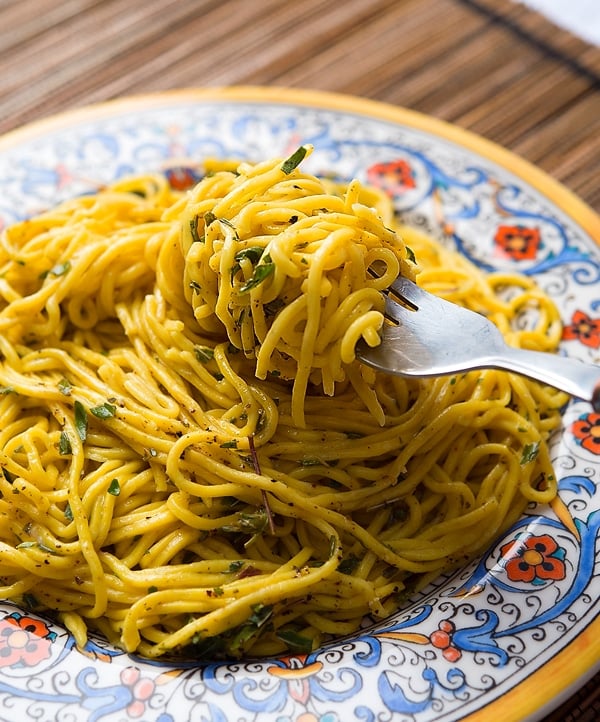
If you’ve read any foraging book written over the past 50 years, you’ve probably read about how wondrous the mystical, magical cattail is: Pantry of the marsh! Supermarket of the Swamp! Weee!
Don’t believe it. Yes, there are lots of edible bits and pieces of the cattail, Typha angustifolia and its cousins. You can make flour from the rhizomes, you can eat the green “cat’s tails,” and you can eat the inner shoots of the stalks. I’ve done it all, and in each instance it’s been a case of “That was great. Let’s never do this again.”
Making the flour is arduous and the resulting flour boring, the green cat’s tails taste like hippie food to me, and the inner shoots are so mucilaginous they’d be great as an okra alternative, but for little else.
That leaves two final cattail products: the young racemes and shoots under the mud, and the pollen. I happen to love the young racemes, which are the growing tip of the older rhizome. Crunchy and a little sweet, they are something to hunt for when you are duck hunting and the birds don’t feel like flying. It’s the pollen, however, that is my favorite part of the cattail.
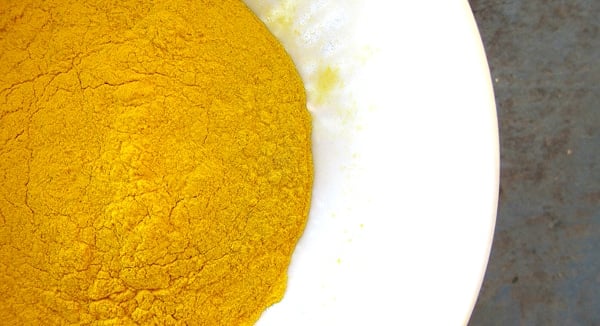
It is a shockingly vibrant canary color, with a mild floral aroma and just a little hint of nuttiness. Flavorwise, it’s not very strong. In fact, there’s not a lot of flavor at all. But the pollen contains about 14 to 22 percent carbs, somewhere around 17 percent protein and anywhere from about 2 to 7 percent fat (depending on the species).
I suppose the high protein content is nice, but I really use cattail pollen as a sort of North American saffron or turmeric — I want that awesome color. The classic recipe is to mix cattail pollen with flour to make muffins or pancakes. I might do that someday, but I am a pasta guy at heart. So I had pasta in the brain as I went out the other day to collect some pollen.
How do you do this? I’d like to thank my colleague John Kallas for the best method ever. Find a plastic gallon-sized water or milk jug. Make sure it’s clean and dry and that you have the cap. Get some scissors. Pick the jug up by the handle, only upside down. You want the cap facing down. Now use the scissors to cut a 3-inch hole in the other side of the jug just opposite the handle. You now have a cattail pollen harvesting device.
You use your cattail pollen harvesting device like this: Find cattails where the cat’s tail is green, or just beginning to brown. You should see a scruffy section just above the “tail.” It should be vaguely yellow. Bend the cattail over and insert this scruffy, vaguely yellow thing into the jug. Shake the cattail back and forth a bunch of times so the pollen flies off into the jug. It will collect at the bottom. You should get about 1 tablespoon per cattail, if you time things right.
Note: If you are interested in this, watch your local cattail patch! Pollen season can last only a week or so, so get while the gettin’s good.
Once you have your pollen, use a flour sifter or somesuch to screen out the fluff and any critters wandering around in the pollen. I’ve never stored the pollen for a long time, but if I did I’d put it in a glass jar and freeze it.

Since I was out in the area gathering cattail pollen and I knew I wanted to make pasta, I kept my eye out for any other wild edible plants to serve with the pasta. And lo and behold I noticed that our local coyote mint was in bloom!
Coyote mint is NorCal’s lowland version of a very common Sierra Nevada minty thing called mountain pennyroyal; I’ve written about pennyroyal before. Coyote mint is also known as Monardella villosa. Monardellas and monardas are “mints,” but are closer in flavor to oregano. Think of them as the illegitimate love children of oregano and regular mint. Awesome, complex flavors that really come through almost any dish — they are as strong as cattail pollen is mild.
Once I found the coyote mint, I knew I had my dish. With such beautiful ingredients, go simple: Pasta, good Sacramento olive oil, freshly ground black pepper, the coyote mint and maybe a squeeze of lemon from our backyard lemon tree.
The essence of good Italian food is purity of ingredients left to shine on the plate. This is my Sacramento version. Enjoy.
Cattail Pollen Spaghetti with Wild "Oregano"
Ingredients
- 2 cups (10 ounces) all-purpose flour
- 3 to 4 tablespoons cattail pollen
- 1 egg
- About 1/2 cup water
- 2 to 3 tablespoons coyote mint, mountain pennyroyal, some other monarda or monardella, i.e., bee balm; or just oregano
- Olive oil
- Salt and black pepper
- A squeeze of lemon (optional)
- Grated cheese (optional)
Instructions
- To make the pasta dough, whisk together the flour and cattail pollen in a large bowl. Form a well in the center of the flour and add the egg and water. Start mixing the dough with your finger or a fork: Depending on your flour, the humidity of the day, etc., you might need some more water. You want a shaggy mass to form in the bowl. Start kneading it into a dough ball in the bowl, making sure to pick up all the floury bits stuck to the sides.
- Move the dough out to a floured work surface and knead well for 5 minutes. Form into a ball and cover with plastic wrap. Set this on the counter for 1 hour to hydrate.
- Cut the dough into 6 equal pieces. Take one, leaving the rest under the plastic wrap. Flatten it out with your hands and then roll it out on a pasta maker or with a rolling pin. I use an Atlas pasta maker. Don't roll the pasta too thin: You want it to be about 1/8 inch thick, which is about No. 5 on my machine (No. 9 is the thinnest). Flour the sheets well and lay them to dry a bit on a work surface. When you are done with all the dough, run the sheets through the spaghetti attachment, which usually comes with the Atlas. If you don't have one, cut the noodles into thin ribbons with a sharp knife.
- Gently toss the pasta with some more flour and lay on a sheet pan or wooden board to dry.
- To finish the dish, bring a large pot of water to a boil. Add enough salt to make the water taste salty. Get a large saute pan, put about 2 tablespoons of olive oil in it and turn the heat to medium-high. Boil the pasta, using tongs to make sure the strands do not stick to each other. When the pasta floats to the surface, cook it another 30 seconds or so and then move it to the saute pan with the oil.
- Toss the pasta in the hot oil and add the coyote mint (or other minty-oregano type herb). Turn off the heat the move everything to a large bowl. Toss with some black pepper, grated cheese, a little more olive oil and maybe a squeeze of lemon. Serve at once.
Nutrition information is automatically calculated, so should only be used as an approximation.

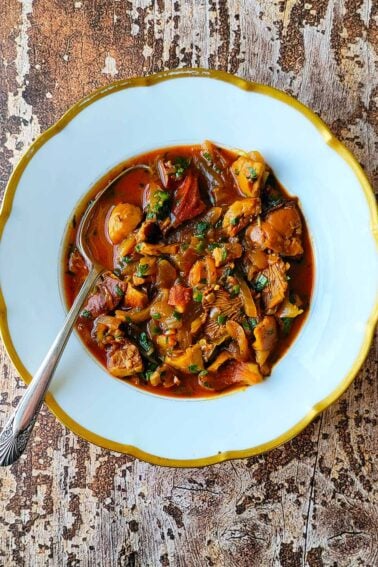

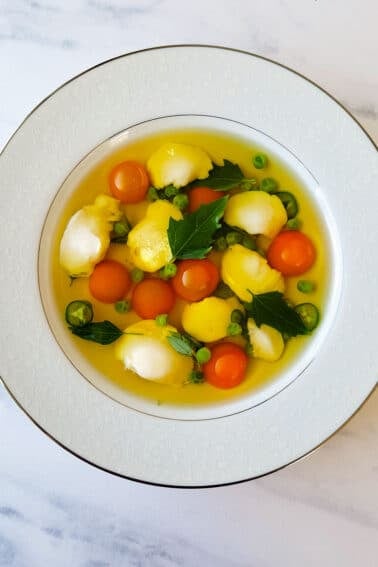
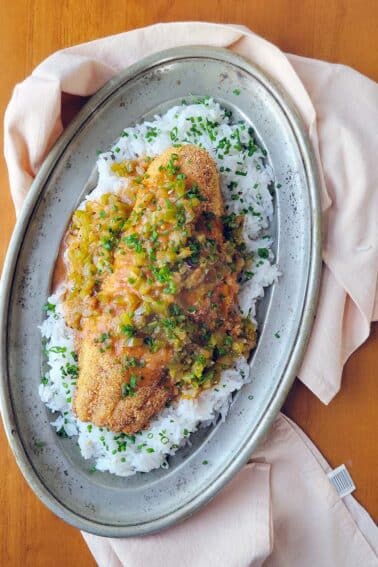
Love this dish! Made it last night for my kids and husband. Simple, yet great way to end the night with a bottle of red wine.
N.
Hey Hank!
I thought you might be intrigued by this – I recently figured out a way to use the sweet corn-like taste, yet funky, fibery texture of brown cattail fluff to make a really tasty vegetarian “pulled pork” substitute! Seriously. Even my 10 year old liked it!
I called my recipe “Vegetarian Pulled Pork BBQ.”
You can check it out here (I referenced this dish and linked to your site in it!): https://www.smartlivingnetwork.com/b28505